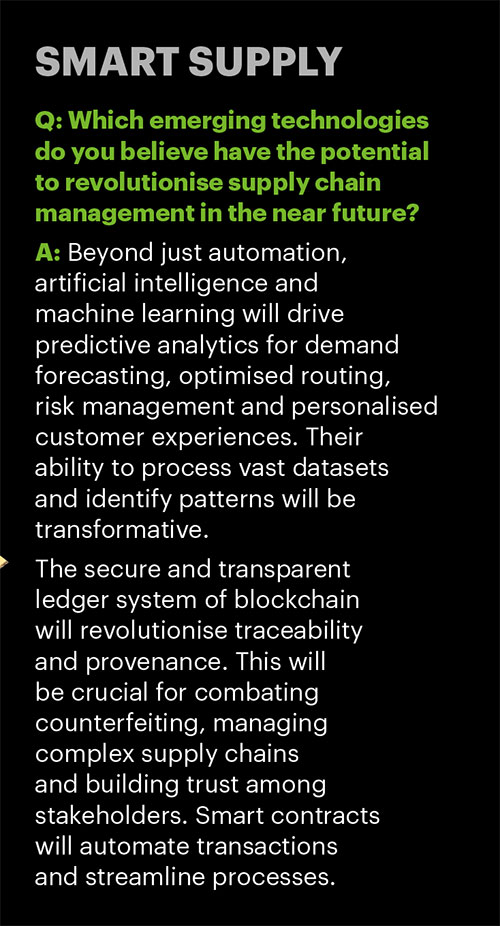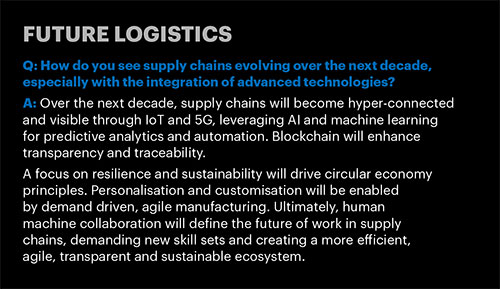Mohan Pandithage
SUPPLY SYNERGY
“Staying close to stakeholders, maintaining strong supplier relationships and keeping an ear to the ground are essential”

In today’s fast-paced global economy, supply chain and logistics play a pivotal role in ensuring seamless business operations. From managing risks and disruptions to leveraging technology for efficiency, companies must continuously innovate to stay competitive.
As industries worldwide adapt to digital transformation and sustainability challenges, leaders in the field provide critical insights into the evolving landscape. Chairman and Chief Executive of Hayleys – Mohan Pandithage is one such visionary leader in one of Sri Lanka’s most diversified multinational conglomerates..
With decades of expertise in logistics, manufacturing and global trade, Pandithage has been instrumental in steering Hayleys’ growth and expanding its presence across multiple sectors. His deep understanding of supply chain dynamics, coupled with his leadership in navigating industry challenges, makes him an ideal voice to discuss the future of logistics and supply chain management in an increasingly interconnected world.

Q: What strategies do you recommend for building resilient supply chains that can withstand global disruptions?
A: To navigate a world of change, businesses must build supply chains that adapt, innovate and thrive. Geographical diversification plays a key role in resilience. Engaging suppliers across multiple regions can strengthen continuity.
Digitalisation through predictive analytics, real-time tracking and AI driven forecasting enhances the ability to anticipate disruptions and make swift, informed decisions. Intelligent supply chain systems offering end-to-end visibility further improve agility in responding to evolving circumstances.
Social and environmental screening is essential for responsible sourcing, ethical labour standards and sustainable resource management. The impact of climate change extends beyond business operations to affect suppliers and surrounding communities. Extreme weather, water scarcity and shifting agricultural patterns can disrupt the entire value chain, necessitating climate adaptation in supply chain planning.
Building strong relationships with suppliers, logistics providers and customers fosters a collaborative network and enables quick adaptation to demand shifts, material shortages or logistical constraints.
“To navigate a world of change, businesses must build supply chains that adapt, innovate and thrive”

Q: How should organisations balance cost efficiency with sustainability in their supply chain operations?
A: Many organisations struggle with the misconception that sustainability and cost efficiency are at odds with each other. In reality, a well integrated sustainability strategy can drive long-term cost savings while strengthening supplier relationships, brand reputation and stakeholder trust.
A philosophy that sees sustainability as an investment rather than an expense is key. By empowering smallholder suppliers through training and better market access, for example, businesses create a win-win situation. Value chain partners benefit from improved livelihoods and companies secure a consistent, high-quality supply of raw materials.
This reduces dependence on fluctuating global commodity markets and enhances cost efficiency over time. A strong sustainability proposition enhances efficiency, improves risk management and lowers costs. Sustainable practices such as energy efficiency improvements, waste reduction and circular economy initiatives help companies optimise resource use, whether by reducing water consumption in textile production or maximising energy efficiency in manufacturing facilities.
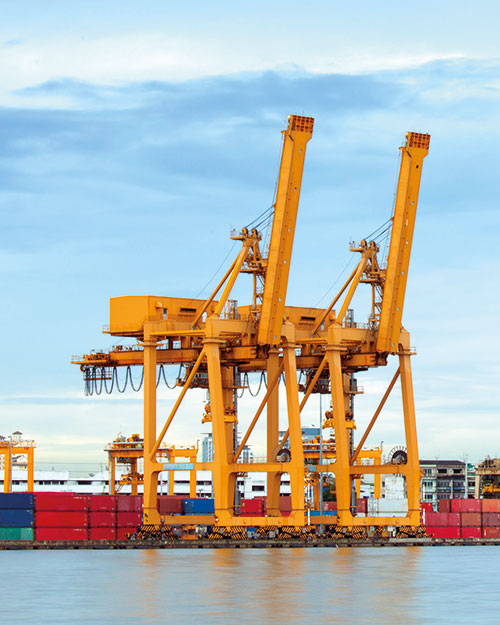
Sustainability driven supply chain decisions mitigate regulatory risks and enhance market access. With stricter environmental and social compliance standards worldwide, businesses that proactively support suppliers in adopting sustainable practices can avoid fines, prevent disruptions and strengthen their value chain, ultimately gaining a competitive edge in global markets.
Q: Do you believe companies should prioritise localised supply chains over global ones to reduce risks or is a hybrid model more effective?
A: Recent global events, such as trade restrictions and logistical bottlenecks, have highlighted the vulnerabilities of highly globalised supply chains.
A hybrid approach that blends local and global sourcing strategies can offer the best of both worlds. Prioritising strong domestic supply chains where feasible, reduces dependency on volatile international markets and creates greater value for multiple stakeholders, strengthening the broader economy.
This is particularly beneficial in industries where raw materials can be sourced locally while still maintaining access to international suppliers for strategic needs. Global connectivity remains essential for innovation, competitiveness and economies of scale.
Export driven businesses, for example, benefit from access to diverse international markets, ensuring that products remain competitive on a global scale. Diversification is critical in today’s rapidly evolving operating landscapes, allowing businesses to mitigate risks and adapt to unforeseen disruptions.
The key is strategic flexibility. Companies should continuously assess their supplier portfolios, identify critical dependencies and develop contingency plans that enable them to pivot between local and global sources when necessary. By optimising this balance, businesses can build more resilient, adaptable and sustainable supply chains.
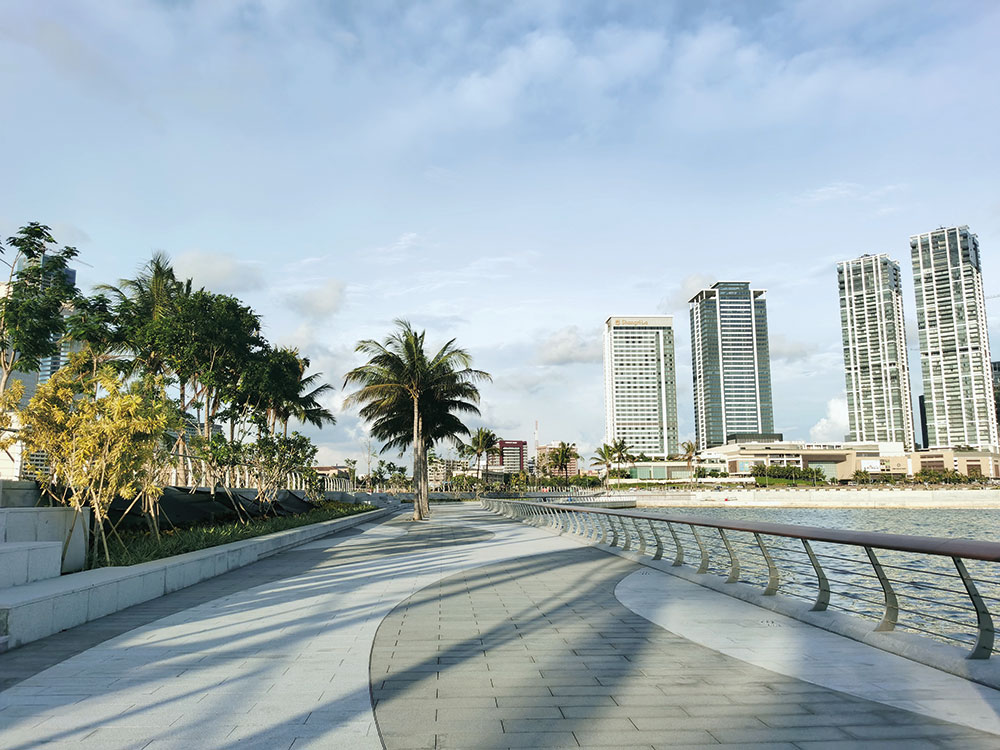
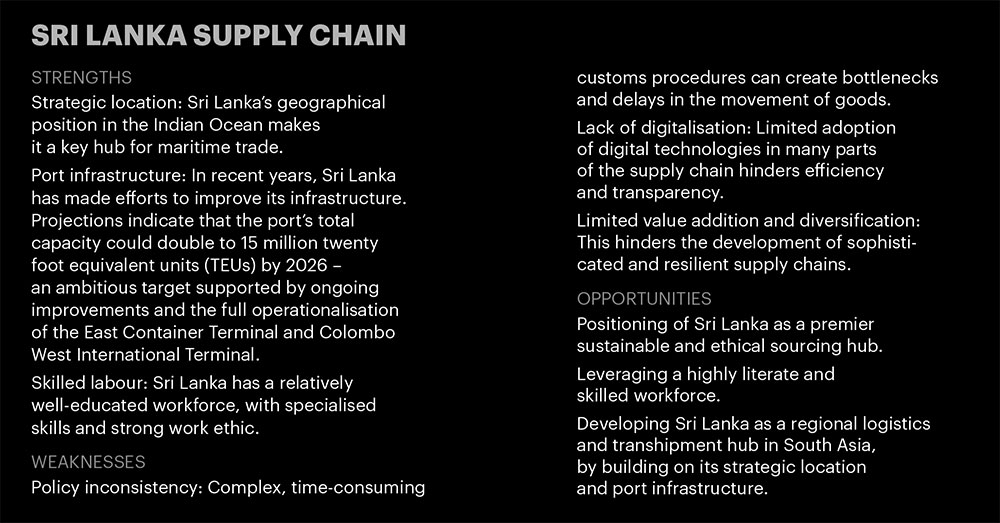
Q: How can supply chains adapt to the increasing demand for faster deliveries and more personalised customer experiences?
A: Consumer expectations have changed dramatically. Today, businesses must cater to a world where speed, convenience and personalisation define success. Whether it’s e-commerce logistics or B2B supply chain services, companies must rethink traditional models to keep pace with evolving demands. This demand for rapid, flexible fulfilment is already evident in the rise of quick commerce, where the focus is on processing smaller quantities at a much higher frequency and speed.
Agility and technology play crucial roles in enhancing customer experiences. Investments in smart logistics, automation and data analytics enable businesses to improve lead times, enhance transparency and remain responsive to changing customer needs. Digital and AI driven solutions help optimise supply chains by anticipating demand fluctuations, ensuring that inventory and distribution strategies stay aligned with market trends.

For instance, logistics and transportation solutions can be enhanced with digital tracking, enabling real-time updates for customers. The value of customer centricity cannot be underestimated. Staying close to stakeholders, maintaining strong supplier relationships and keeping an ear to the ground are essential. Businesses that actively listen to customer feedback and adapt based on evolving preferences can create more meaningful and engaging experiences.
“Today, businesses must cater to a world where speed, convenience and personalisation define success”
Q: What skills and competencies do you believe are critical for the next generation of supply chain professionals?
A: The next generation of supply chain leaders must be equipped with a diverse set of skills to navigate an increasingly complex and digital world. Professionals who can harness digital tools to optimise inventory management, demand forecasting and logistics will have a significant advantage.
At the same time, staying updated on technological advancements and industry trends is essential, as supply chains are continuously evolving. Soft skills remain just as important –relationship management, negotiation and strategic thinking are essential for building strong supplier networks and navigating disruptions.
Adaptability and agility – being able to think on one’s feet and solve problems creatively, are critical in responding to rapid changes in policies, environmental regulations and shifting market dynamics. A strong work ethic, focus and the ability to anticipate challenges will set apart the most effective professionals in the field.
Investing in training and development programmes to build a future ready workforce is critical. By fostering a culture of continuous learning and encouraging professionals to stay aware of emerging developments, businesses ensure that their teams remain agile, innovative and prepared for the challenges of tomorrow.
Q: What are the most significant risks facing modern supply chains and how can companies proactively address them?
A: Modern supply chains face multiple risks, ranging from geopolitical instability and trade restrictions to cyber threats and climate change. A proactive risk management strategy that enables strategic foresight is essential. Scenario planning helps businesses anticipate disruptions and develop contingency plans, while ongoing assessments of trends allow for agile adjustments.
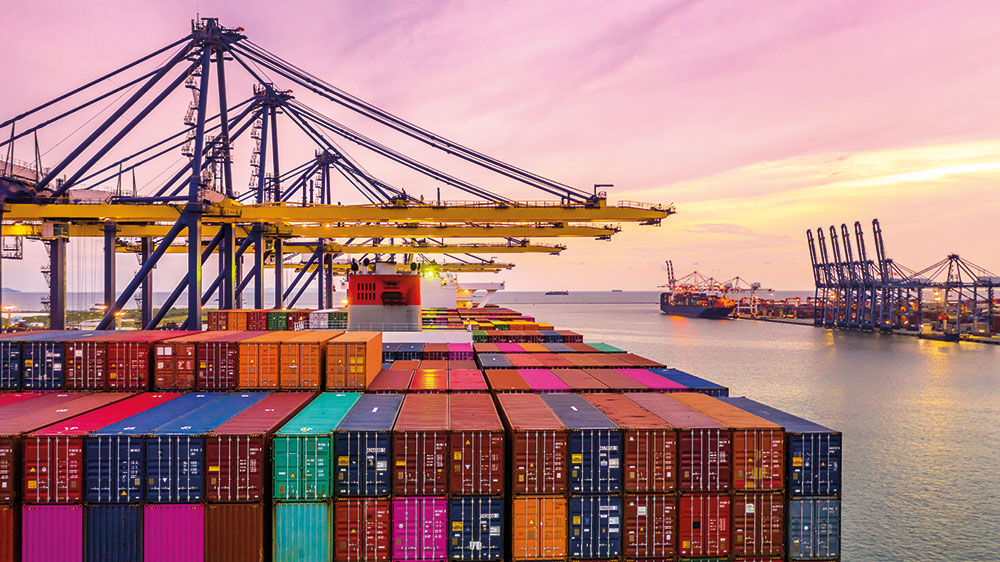
Climate change implications are loud and clear, with raw material scarcity and significant volatility in pricing being two major consequences affecting industries. Companies must integrate climate resilience into their supply chain strategies, ensuring long-term sustainability.
Geographical diversification reduces dependency on single suppliers or regions, improving flexibility and resilience. Beyond operational risks, social risks like human rights violations and child labour can lead to reputational damage and contract losses.
Compliance with stringent laws such as the EU Deforestation Regulation (EUDR) and the Corporate Sustainability Due Diligence Directive (CSDDD) requires rigorous supplier audits and strong governance structures.
“Investing in training and development programmes to build a future ready workforce is critical”

Supply chain digitalisation through advanced tracking and blockchain enhances transparency and helps prevent bottlenecks. However, this increased reliance on digital systems also introduces significant cybersecurity risks.
Cyberattacks targeting supply chains can range from data breaches and ransomware attacks to the disruption of critical operations and theft of intellectual property. To mitigate these threats, companies must prioritise cybersecurity throughout their supply chain ecosystem and conduct regular cybersecurity audits and vulnerability assessments.


